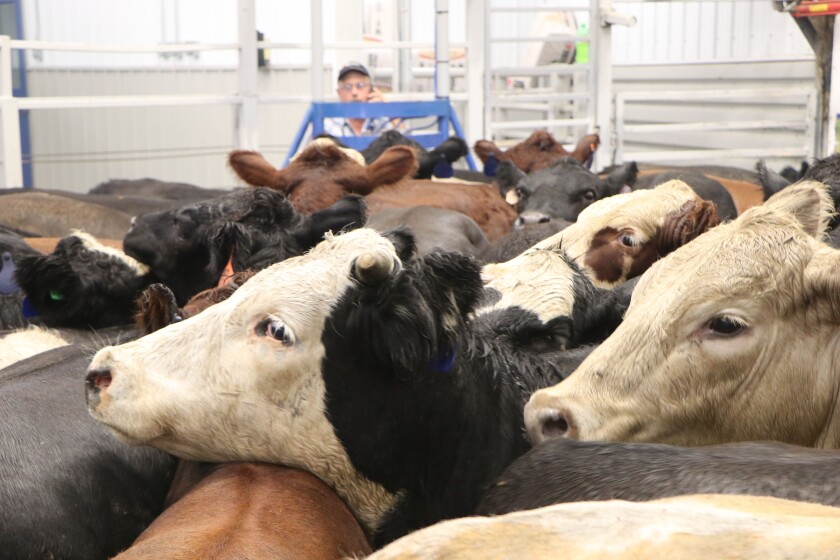Recognizing Animals Risk Protection (LRP) Insurance Coverage: A Comprehensive Guide
Navigating the realm of animals threat defense (LRP) insurance policy can be an intricate endeavor for several in the agricultural sector. From how LRP insurance works to the numerous coverage choices readily available, there is much to reveal in this thorough guide that could possibly form the means livestock manufacturers come close to danger monitoring in their businesses.

Just How LRP Insurance Functions
Sometimes, recognizing the auto mechanics of Animals Danger Defense (LRP) insurance policy can be complex, but breaking down exactly how it works can give quality for breeders and farmers. LRP insurance policy is a risk management tool designed to secure animals manufacturers against unanticipated price declines. It's important to keep in mind that LRP insurance policy is not an earnings warranty; rather, it concentrates only on rate risk protection.
Eligibility and Coverage Options

When it comes to protection choices, LRP insurance coverage supplies manufacturers the adaptability to select the protection degree, protection period, and endorsements that best suit their threat monitoring needs. By understanding the qualification standards and coverage options readily available, animals manufacturers can make educated decisions to manage risk effectively.
Advantages And Disadvantages of LRP Insurance Policy
When reviewing Livestock Risk Defense (LRP) insurance coverage, it is vital for livestock producers to evaluate the advantages and disadvantages integral in this risk monitoring tool.

One of the main benefits of LRP insurance policy is its ability to supply protection against a decrease in livestock costs. This can help protect producers from economic losses arising from market fluctuations. Furthermore, LRP insurance coverage supplies a level of flexibility, permitting manufacturers to customize protection degrees and plan durations to fit their certain requirements. By securing an ensured price for their livestock, producers can better take care of danger and strategy for the future.
Nevertheless, there are additionally some drawbacks to think about. One restriction of LRP insurance policy is that it does not protect versus all kinds of dangers, such as disease outbreaks or all-natural calamities. Furthermore, costs can sometimes be pricey, specifically for manufacturers with big livestock herds. It is important for producers to carefully assess their individual threat direct exposure and economic circumstance to figure out if LRP insurance coverage is the ideal threat administration tool for their procedure.
Comprehending LRP Insurance Coverage Premiums

Tips for Making The Most Of LRP Conveniences
Taking full advantage of the advantages of Livestock Threat Protection (LRP) insurance coverage requires critical preparation and proactive danger administration - Bagley Risk Management. To make the most of your LRP protection, think about the following tips:
Regularly Evaluate Market Conditions: Keep notified concerning market fads and price variations in the livestock market. By monitoring these elements, you can make informed decisions about when to acquire LRP insurance coverage to safeguard against possible losses.
Establish Realistic Insurance Coverage Levels: When selecting protection levels, consider your manufacturing expenses, market worth of livestock, and potential risks - Bagley Risk Management. Setting practical coverage levels makes sure that you are properly shielded without paying too much for unnecessary insurance coverage
Diversify Your Insurance Coverage: As opposed to depending only on LRP insurance, take into consideration diversifying your danger monitoring techniques. Combining LRP with other threat administration tools such as futures agreements or description choices can offer extensive insurance coverage versus market unpredictabilities.
Testimonial and Readjust Coverage Routinely: As market problems transform, periodically examine your LRP coverage to ensure it lines up with your current threat direct exposure. Readjusting coverage levels and timing of purchases can assist enhance your risk protection approach. By following these pointers, you can take full advantage of the benefits of LRP insurance policy and secure your livestock operation versus unexpected risks.
Final Thought
Finally, animals risk security (LRP) insurance is a valuable device for farmers to manage the monetary risks connected with their animals operations. By comprehending just how LRP functions, qualification and coverage options, as well as the advantages and disadvantages of this insurance, farmers can make enlightened choices to safeguard their livelihoods. By carefully considering LRP premiums and carrying out methods to optimize benefits, farmers can reduce possible losses and special info make sure the sustainability of their procedures.
Livestock producers interested in acquiring Livestock Danger Defense (LRP) insurance can discover a range of eligibility requirements and insurance coverage choices customized to their details animals procedures.When it comes to insurance coverage options, LRP insurance provides manufacturers the flexibility to choose the protection degree, coverage period, and endorsements that best fit their Extra resources threat monitoring demands.To realize the ins and outs of Animals Danger Security (LRP) insurance fully, understanding the elements influencing LRP insurance policy costs is crucial. LRP insurance premiums are established by different components, including the protection degree selected, the anticipated rate of animals at the end of the insurance coverage period, the type of animals being guaranteed, and the size of the protection period.Review and Adjust Insurance Coverage On a regular basis: As market conditions change, occasionally review your LRP insurance coverage to guarantee it aligns with your existing risk direct exposure.